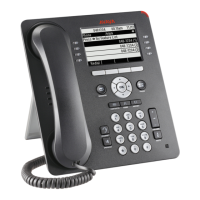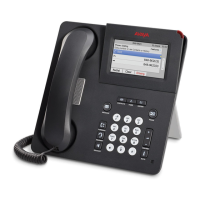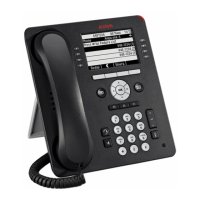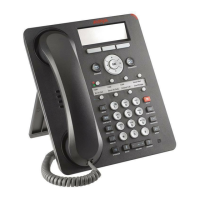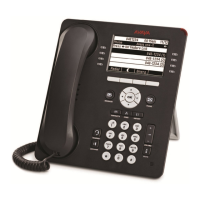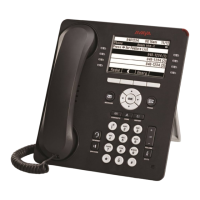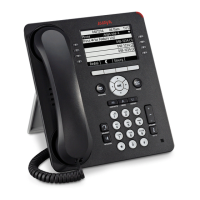Local Administrative (Craft) Options
32 9600 Series H.323 Deskphones Release 6.0 Installation and Maintenance Guide
3. If you enter a numeric digit that causes the IP Address or subnet mask value to exceed 255,
or any value to exceed its maximum field value, an error beep tone sounds, the digit is
ignored, and the cursor does not move forward.
4. If you enter a numeric digit for a value or for an IP Address or subnet mask field after
entering only a zero, the new digit replaces the zero. If the asterisk dialpad button is
pressed and the user is entering an IPv4 address, a decimal point is inserted into the input
buffer and the cursor is moved to the next character location. If the asterisk dialpad button is
pressed and the user is entering an IPv6 address, a colon is inserted into the input buffer
and the cursor is moved to the next character location. See Data Entry and Validation of
IPv4 and IPv6 Addresses for additional information on entering data in IPv4 and IPv6
format.
5. To backspace on non-touchscreen phones, press the leftmost softkey; for a touchscreen
deskphone, use the Bksp softkey instead. When you press the applicable button or key to
backspace, the most recently entered digit or period is erased from the display. The cursor
remains in the erased character’s former position.
6. Pressing Exit (or touching that softkey for a touchscreen deskphone) exits the local
procedures.
!
Important:
Important:
If any changes were made using the 802.1X procedure or the ADDR procedure, if
the value of SIG was changed to 2 (SIP) or if the Crafts Entry screen was invoked
during startup, the telephone immediately resets upon pressing/touching Exit. If
no 802.1X, SIG, or ADDR changes were made, or if the local procedures were
invoked post-startup, the telephone redisplays the screen (or other display) that
was effective when the craft options was invoked.
Note:
Note:
If PROCSTAT has been administered to 1, you will not be able to invoke any
administrative options other than V I E W.
Note:
Note:
Some touchscreen deskphones present an onscreen keyboard that allows you to
"type" the data you want to enter on the display. See the applicable user guide for
information about using the onscreen keyboard.
Data Entry and Validation of IPv4 and IPv6 Addresses
When entering an IPv4 address or the subnet mask the dialpad uses numeric-only entry
(single-tap for touchscreen telephones), except for entry of an asterisk to place a period within
the address being entered. While the cursor is in any of the leftmost three fields, pressing the "*"
button on the dial pad causes the value for the field being entered to be terminated (a zero is
displayed if nothing else is), a period to be displayed in the space after the field, and the cursor
to move to the next space. Pressing the "*" button while the cursor is in the last (right most) field
results in an error beep and the cursor being left where it is. An IPv4 address or subnet mask is
considered to be complete only if all three 'dots' that separate the fields are entered and if the

